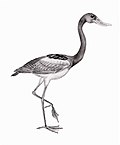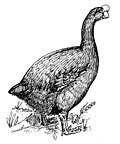| Malacorhynchus | |
|---|---|
 | |
| Pink-eared duck (Malacorhynchus membranaceus) | |
| Scientific classification | |
| Domain: | Eukaryota |
| Kingdom: | Animalia |
| Phylum: | Chordata |
| Class: | Aves |
| Order: | Anseriformes |
| Family: | Anatidae |
| Subfamily: | Anatinae |
| Genus: | Malacorhynchus Swainson, 1831 |
| Species | |
Malacorhynchus is a genus of duck within the family Anatidae. [1] It was established in 1831 by English ornithologist William Swainson, when he proposed moving the pink-eared duck into a subgenus (Malacorhynchus) based on unique characters of its beak and toes. [2] The genus contains one living and one extinct species. [1] [3]

